If you’re thinking of growing a Monstera plant indoors but don’t know which one to get, then this guide is for you.
We will be showing you the different types of Monsteras ranging from the popular Swiss Cheese Plant to the majestic Monstera standleyana.
You’ll also learn about these plants’ distinct features, care requirements, and more.
What are the different types of Monstera plants?
There are more than 40 Monstera varieties which include the following:
- Monstera deliciosa
- Monstera adansonii
- Monstera borsigiana
- Monstera pinnatipartita
- Monstera dubia
- Monstera deliciosa ‘Thai Constellation’
- Monstera siltepecana
- Monstera borsigiana ‘Albo Variegata’
- Monstera obliqua
- Monstera acuminata
- Monstera subpinnata
- Monstera borsigiana ‘Aurea’
- Monstera standleyana
- Monstera acacoyaguensis
- Monstera epipremnoides
- Monstera karstenianum
- Monstera punctulata
- Monstera lechleriana
- Monstera sierrana
1) Monstera deliciosa
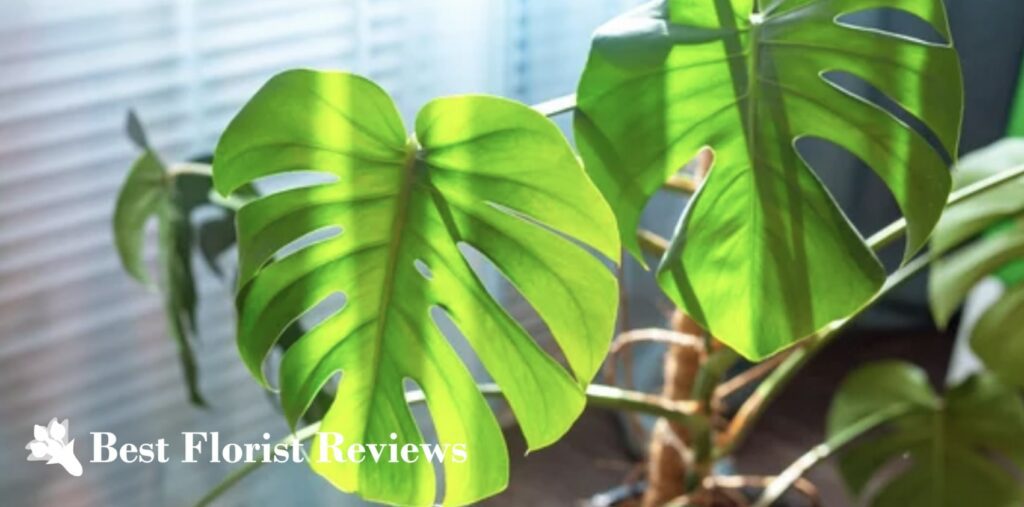

Commonly called the Swiss cheese plant or split-leaf philodendron, the Monstera deliciosa is a flowering plant with enormous heart or oval-shaped leaves that has holes or splits.
The ornamental plant is one of the most common Monstera species, native to the tropical rainforests of Mexico and Panama.
As an indoor plant, it usually grows between 6 to 8 ft. tall. To grow large and deep-green foliage, it needs to be kept on a spot receiving full or semi-shaded sunlight.
Watering the Monstera deliciosa needs to be done once per 1 or 2 weeks when the top 1/4 inch of the soil has dried.
Misting its leaves can be helpful to give it more moisture, especially in dry indoor settings.
2) Monstera adansonii


The Monstera adansonii is a smaller version of the Swiss cheese plant.
The former can reach a mature height of 3 to 5 ft. indoors with leaves that are 1 to 3 ft. wide, whereas the latter can grow between 6 to 8 ft. tall with foliage measuring 1.5 ft. across or more.
Likewise, the Monstera adansonii sports leaf holes that randomly vary in size.
But instead of full sun, the vining plant prefers bright indirect light and needs to be placed a few meters away from a window to prevent leaf scorch.
Furthermore, its potting soil must not dry out between waterings but remain moist all the time. Once a week of watering should suffice for this plant during its growing season.
3) Monstera borsigiana
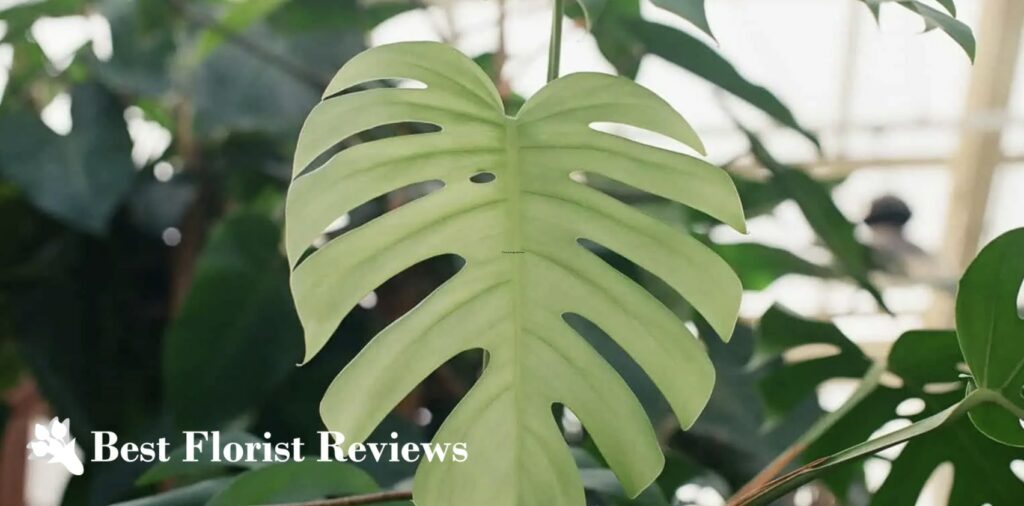

The Monstera borsigiana produces leaves that closely resemble those of the Monstera deliciosa, albeit smaller. This has led some people to believe that it is a cultivar of the deliciosa species.
Besides having smaller leaves, Monstera borsigiana has a faster growth rate than the deliciosa.
Young plants of this kind develop dark green, heart-shaped foliage which becomes perforated as they grow older.
Moreover, there are two hard-to-find cultivars bred from the Monstera borsigiana.
One of them is the Monstera borsigiana ‘Aurea’ known for its yellow variation and the other is the Monstera borsigiana ‘Albo Variegata’ which has white marks.
4) Monstera pinnatipartita
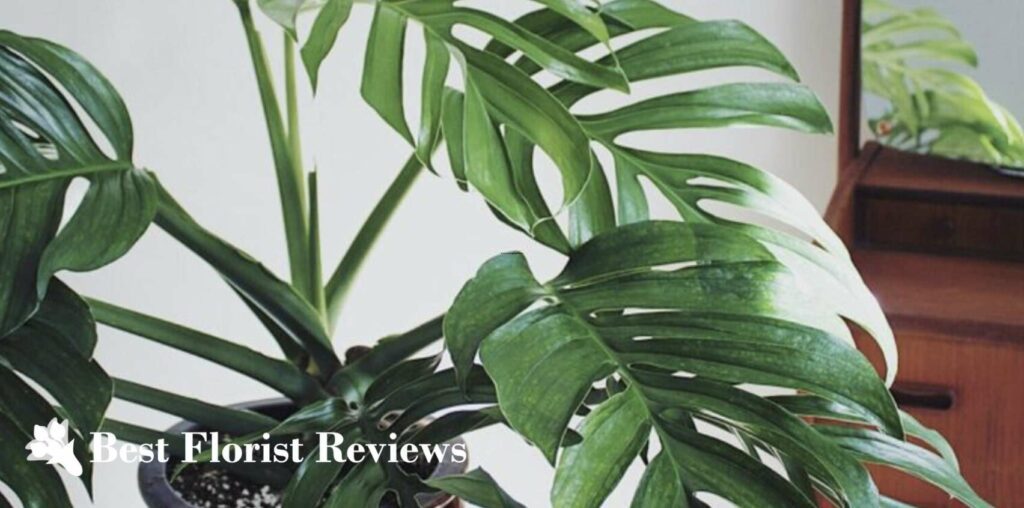

Monstera pinnatipartita is a rare climbing vine that originates in the tropical rainforests of Ecuador, Peru, and Colombia. Compared to other Monsteras, its leaves are rough and narrow.
It reaches up with its aerial roots and needs to hold onto a supporting structure like a trellis, a small pole, or a block of wood.
With the right indoor growing conditions, the evergreen vine can grow at a quick rate of 2 ft. per year. Thus repotting the Monstera pinnatipartita may be needed to support its size.
This plant enjoys plenty of indirect sunlight and is best located near an east-facing window, where the sun is gentle and cool.
Near west and south-facing windows, it should be set at a distance from them, as the hot afternoon sun can burn its leaves.
Also, keep the soil evenly moist and water the Monstera pinnapartita when the top few inches of the soil have dried completely.
The evergreen vine is very sensitive to overwatering, which can cause root damage and fungal disease.
5) Monstera dubia
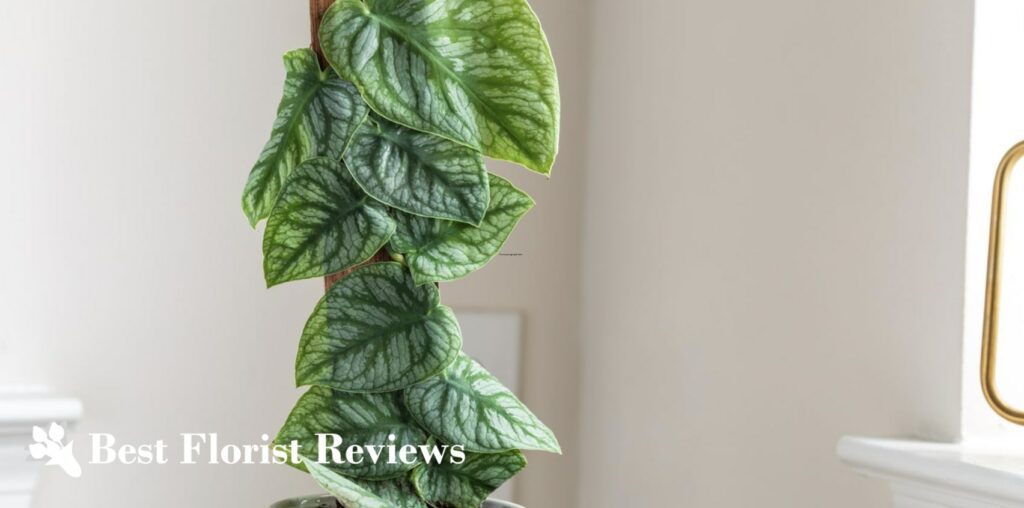

The Monstera dubia features small heart-shaped foliage with a light and dark-green pattern when the plant is still young.
When it reaches maturity and gets the sunlight it needs, the plant will begin to shift to a deep-green hue and form fenestrations which the Monstera is chiefly known for.
Because of its climbing leaves, this Monstera dubia is sought-after by many plant growers and collectors.
It can grow up to 3 ft. tall inside a house. You can place it in a pot with a moss pole or a wooden plank.
The Monstera dubia is also known as a shingle plant. That is because their leaves grow flat and consistent on tree trunks resembling shingle tiles.
Also, this particular Monstera thrives in bright but indirect sunlight and organic and well-drained potting soil, which facilitates good water drainage and moisture retention.
6) Monstera deliciosa ‘Thai Constellation’
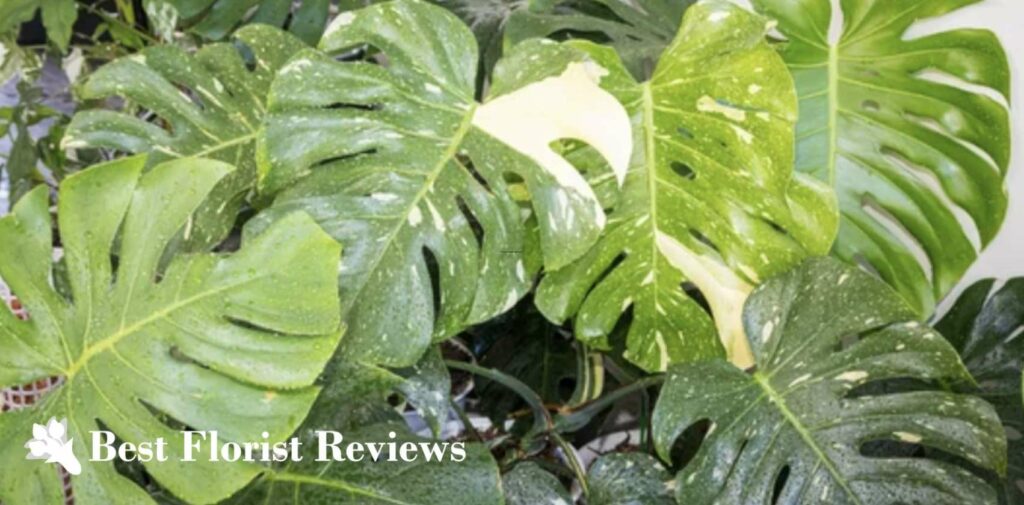

As a cultivar of Monstera deliciosa, the Monstera ‘Thai Constellation’ has similarly large and fenestrated leaves but with light yellow marks and patches throughout.
It was named after the laboratory in Thailand where it was artificially created.
Thai Constellation Monsteras also grow to a good height of up to 8 ft. indoors, taking up some space.
This Monstera type is simple to care for and maintain. It requires bright indirect or shaded light, rich and organic soil, and watering once every week.
And since it is very rare, Monstera ‘Thai Constellation’ has a reputation for being one of the most expensive Monstera species available.
7) Monstera siltepecana
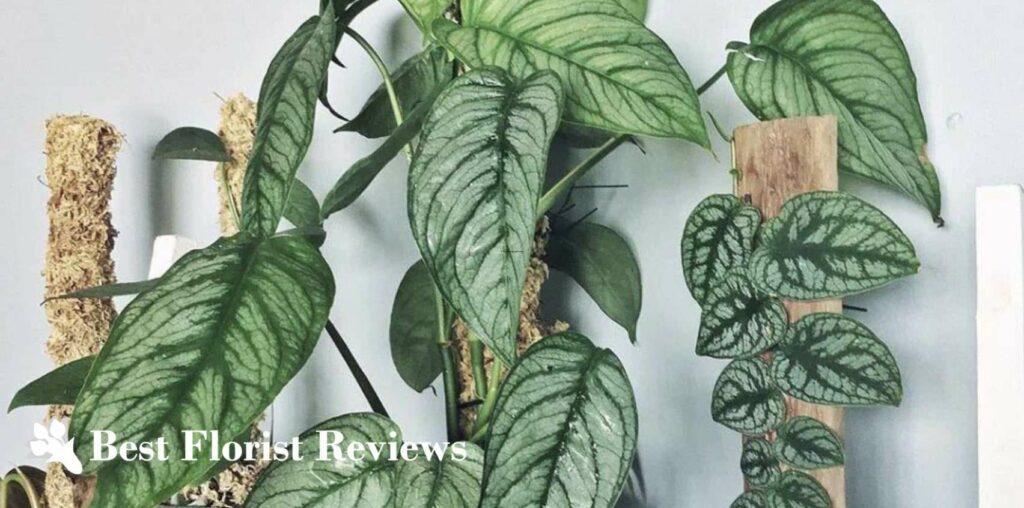

Monstera siltepecana (also referred to as the Silver Monstera) displays silver lance-shaped leaves with dark-green main veins. Its leaves can appear silver under the light or in the sun.
Once mature, the leaves of the Silver Monstera will form neat cuts that reach close to the midrib and have holes on both sides of the foliage.
Silver Monsteras are at home in wet environments in South and Central America where they get partial bright sunlight and plenty of moisture.
The plant owner needs to quickly tend to the Monstera if it has become dry. Otherwise, the leaves will turn yellow or brown.
One of the largest Monstera varieties, this climbing plant can grow up to 8 ft. tall and 3 ft. wide indoors.
Being very versatile, Silver Monsteras can be grown in a pot with a moss pole, in a hanging basket, or in a terrarium.
8) Monstera borsigiana ‘Albo Variegata’
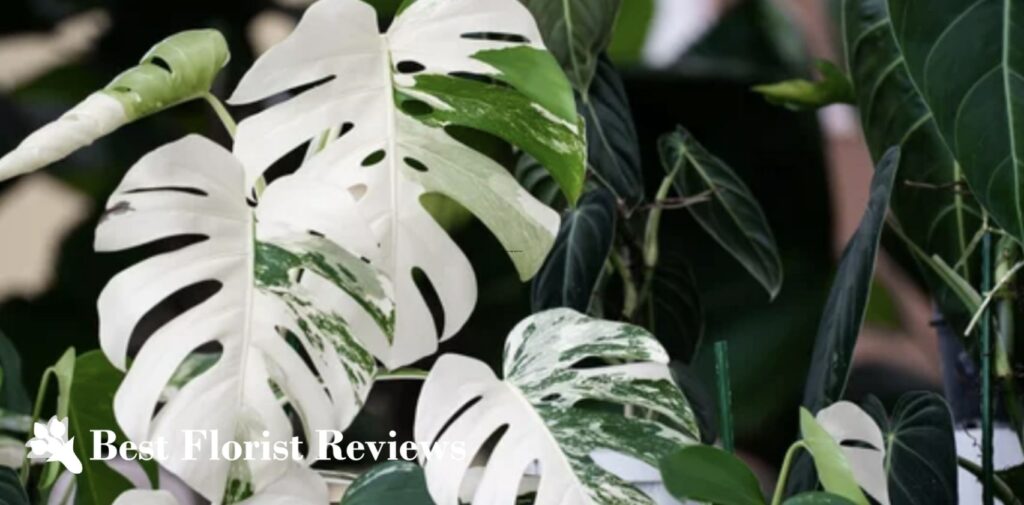

Monstera ‘Albo Variegata’ is a cultivar of the Monstera borsigiana with creamy white foliage.
It’s a highly coveted species of Monstera plant enthusiasts. It grows at a faster rate than its Monstera cousins.
Another remarkable trait of the plant is that it can grow to a great size of up to 10 ft. tall and 3 ft. wide given optimal indoor conditions.
It needs indirect bright sun all day and does best near east-facing windows.
It also requires rich and well-draining soil to develop abundant foliage and wonderful variegation.
A potting soil made up of perlite, coco peat, coco coir, and orchid bark will achieve the right soil for the Monstera ‘Albo Variegata.’ These ingredients will greatly boost the soil’s drainage, moisture retention, and nutrient intake.
Watering the plant weekly is ideal for the variegated plant. Wait until the topsoil becomes dry before doing so.
9) Monstera obliqua


Though it resembles Monstera adansonii, the Monstera obliqua is a different variety altogether.
Monstera obliqua has leaves with a very fine texture like paper and many holes that almost leave the leaf bare. On the other hand, Monstera adansonii has a thick and waxy texture with smaller perforations.
As a young wild plant, Monstera obliqua should grow bushy, which is a sign that it’s healthy. When it matures, it will need to hang on to trees and other plants to get sunlight.
However, compared to other Monstera species, it grows only up to 4 ft. as a houseplant.
It also has a tendency to trail or hang in the air, making them suitable for hanging baskets besides pots with vine supports.
The Monstera obliqua also grows best when provided with bright filtered sun and chunky, rich, and porous soil through which air and water can easily flow.
10) Monstera acuminata
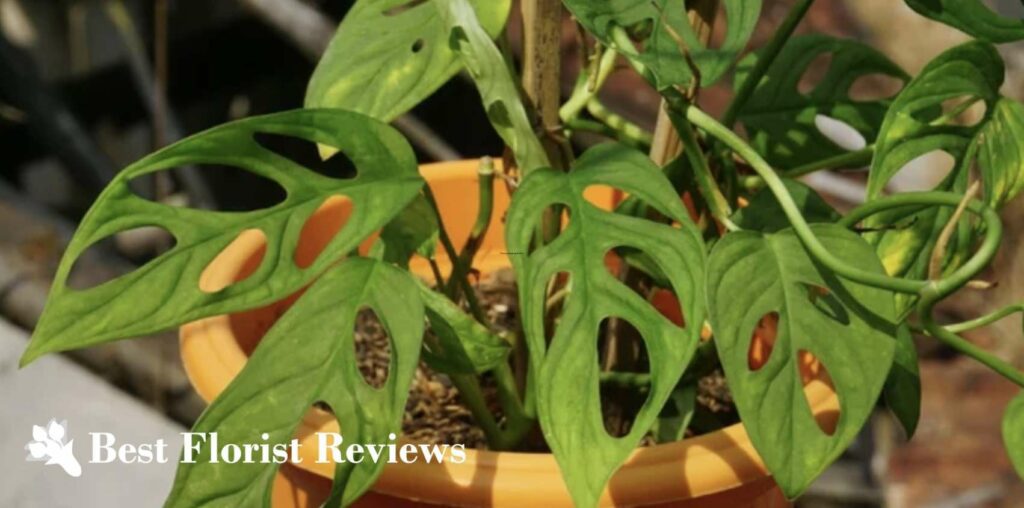

Native to South and Central America, Monstera acuminata is a tropical vining plant with small dark-green leaves that have several narrow holes.
Due to their likeness, it is also sometimes mistakenly referred to as Monstera adansonii.
The key difference is that Monstera acuminata has smaller dark-green leaves and holes, while Monstera adansonii features larger light-green leaves and holes.
Monstera acuminata needs bright but soft indirect light. While the plant can be grown outside in the summer, it has to be kept under a tree or net, or its leaves will burn from the heat.
The best soil to use for Monstera acuminata is loamy soil for excellent aeration and drainage.
The tropical vine also requires watering every 7 to 10 days. It doesn’t like to sit in wet soil, so only water the topsoil when it’s almost or completely dry.
11) Monstera subpinnata
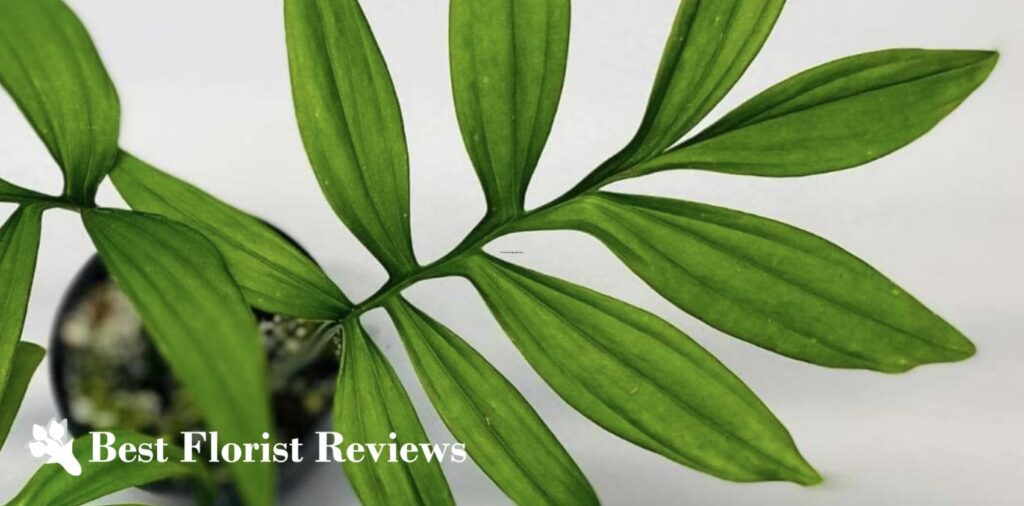

Monstera subpinnata is a beautiful and unique variety with leaflets growing from opposite sides without any fenestrations, unlike the leaves of typical Monsteras.
It originates from South American jungles in Ecuador, Bolivia, Colombia, and Peru. There, it grows to about 30 ft. tall but only grows up to 6 ft. tall indoors.
The palm-like plant needs damp and fast-draining soil. Usually, it will get dry after 7 to 10 days of its last watering.
Humidity is also important for this plant, as with all Monsteras.
A good location to place the Monstera subpinnata is in bathrooms or beside a group of plants. Grouping plants together helps with providing them sufficient humidity.
Besides this, the Monstera subpinnata needs to get bright shaded sun as it does in its rainforest habitat.
Thus, it is best grown by an east-facing window for bright and gentle sun throughout the day.
Also, it needs to be fed with a liquid fertilizer with equal NPK ratio after every watering in spring and summer.
12) Monstera borsigiana ‘Aurea’
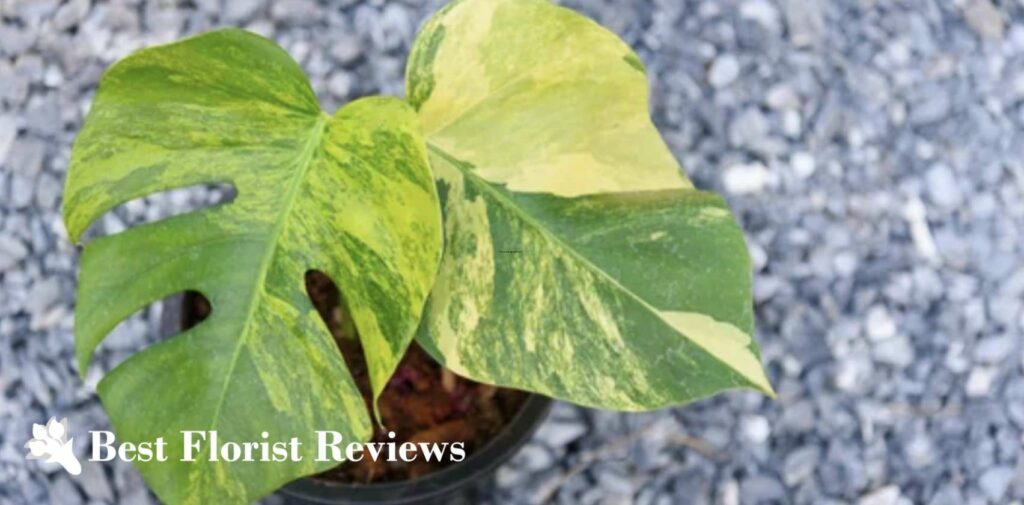

Monstera borsigiana ‘Aurea’ showcases large stout leaves with yellow and yellow-green variation.
The natural habitat of the plant is in Central and South America, particularly from Southern Mexico to Panama.
To mimic the conditions of its native environment, Monstera borsigiana ‘Aurea’ requires bright filtered sunlight, consistent moisture, and fertile, well-draining soil to flourish.
It’s a large species that grows between 6 and 10 ft. tall with proper care and can take up some space at home.
If it gets too large for the house, one may carefully prune the Monstera plant from the base.
Like its white-variegated cousin, the Monstera borsigiana ‘Aurea’ sells expensively in flower shops, nurseries, or rare plant stores.
13) Monstera standleyana
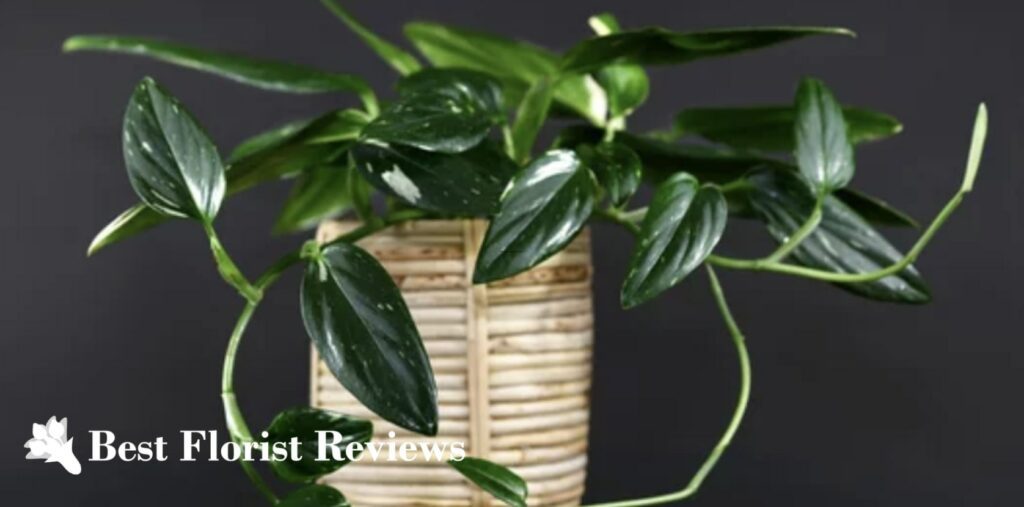

A rare Monstera climber found in Nicaragua, Panama, Costa Rica, and Honduras, the Monstera standleyana features glossy, deep-green, and oval leaves with creamy-white speckles.
Each of its leaves measures only 6 in. long and doesn’t have fenestrations like that of other Monsteras.
Since it closely resembles the Philodendron standleyana or Philodendron Cobra, the Monstera standleyana is commonly mistaken for the other.
Given a support structure to grow up on, the Monstera standleyana can reach a mature height of 4 to 5 ft. indoors.
Furthermore, it is a low-maintenance plant needing bright, indirect light, consistent moisture, and regular watering once a week.
Choose a pot with enough room for the Monstera roots to move and drainage holes for the water to drain out.
If the roots come out at the bottom of the drainage holes or they are tight in the container, the Monstera standleyana will need to be repotted soon.
14) Monstera acacoyaguensis
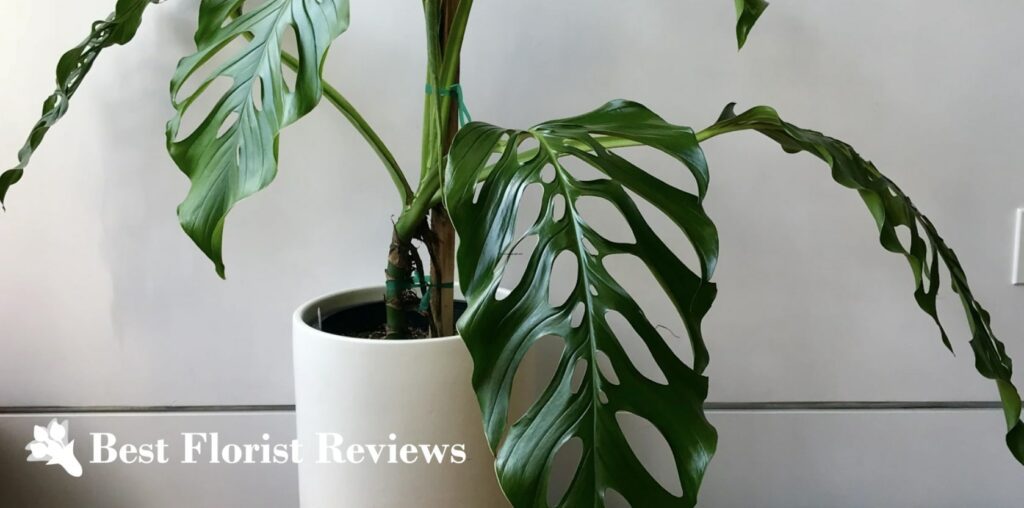

The Monstera acacoyaguensis is an uncommon cultivar of Monstera adansonii which explains why they look alike, having large, wide perforated leaves.
The leaves of the Monstera acacoyaguensis are leather-like, shiny, wavy, and 24 to 33 in. long. Their holes are large as well.
Furthermore, the massive plant can grow taller than the adansonii—at 6 ft. indoors.
Hailing from Mexico and Central America, these plants enjoy getting sun under tree canopies year round. Medium-to-bright indirect sun exposure is ideal for them if grown as a houseplant.
While its soil needs to stay a bit moist, the Monstera acacoyaguensis should not be overwatered because this can lead to a variety of issues such as root rot and a fungal disease.
It prefers a warm temperature between 70℉ and 90℉ and a humid environment. Keep it away from cold weather and drafty windows to prevent falling leaves.
15) Monstera epipremnoides
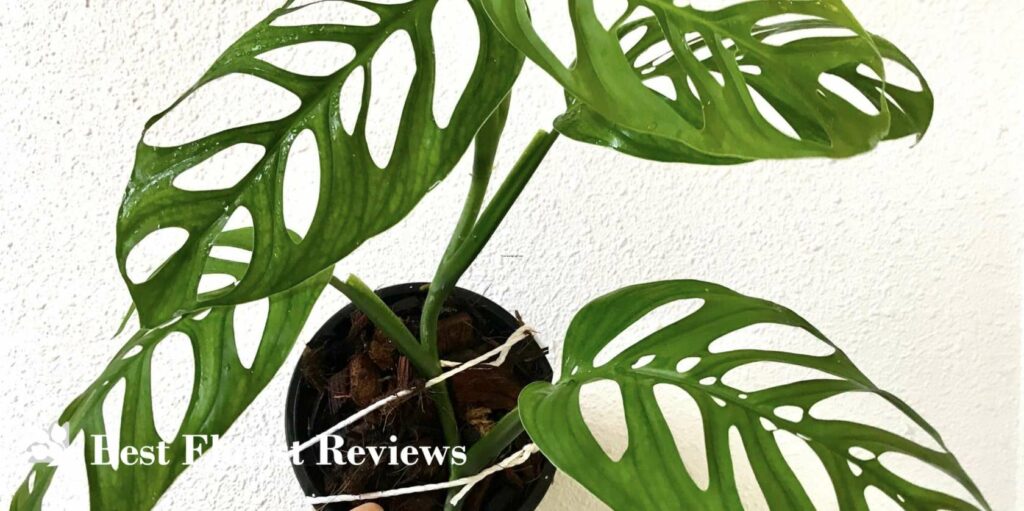

Monstera epipremnoides (or Monstera esqueleto) is a rare flowering plant from Costa Rica with green and leathery foliage and many very large fenestrations—more hole than leaf.
The large leaves of this Monstera vine measure about 2 ft. long, and the entire plant can reach a mature height of 4 to 8 ft. indoors.
Similar to their native environment, it requires dappled or indirect bright light to grow healthily.
An east-facing window is most suitable for the Monstera epipremnoides, where it will get ample gentle sun throughout the day.
Near a south-facing window, the aroid plant should be distanced around 5 to 8 ft. away from it, and sheer curtains should also be used to lower the direct sun’s intensity.
The Monstera plant’s soil must be great-draining with lots of organic matter.
Watering the plant should only be done when the top 2 inches of the soil has become dry.
16) Monstera karstenianum
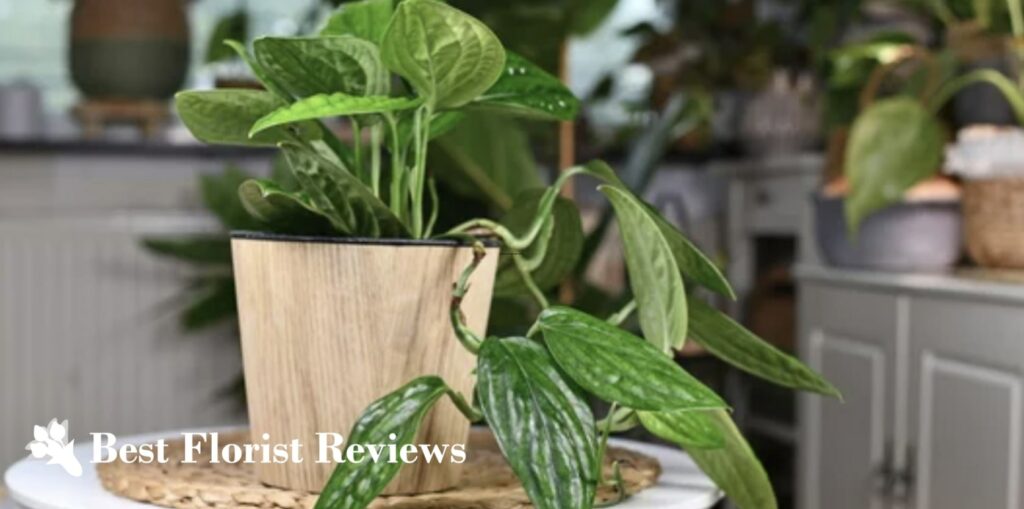

Monstera karstenianum (also known as Monstera Peru) is native to the tropical and subtropical rainforests of South America.
It’s a rare Monstera species and bears small green glossy leaves with gray-blue veins. A single leaf grows to 4 in. long, making it suitable for small garden pots or hanging baskets.
However, it can rapidly outgrow its pot every couple of years and needs to be repotted to encourage good health. It can have a maximum height indoors of 6 to 8 ft.
It isn’t demanding to care for like other Monstera varieties. As a rule of thumb, the plant owner should water the plant once every 1 to 2 weeks when the topsoil becomes dry.
In addition to that, it needs bright and moderate indirect light. As such, locating the plant in front of an east or north-facing window is best for it.
The Monstera Peru is at home in places with room temperature, which ranges from around 65℉ to 80℉.
Its growth will be hindered by cold weather and sudden drops in temperatures. They must be kept away from drafty windows and vents with cool air.
17) Monstera punctulata
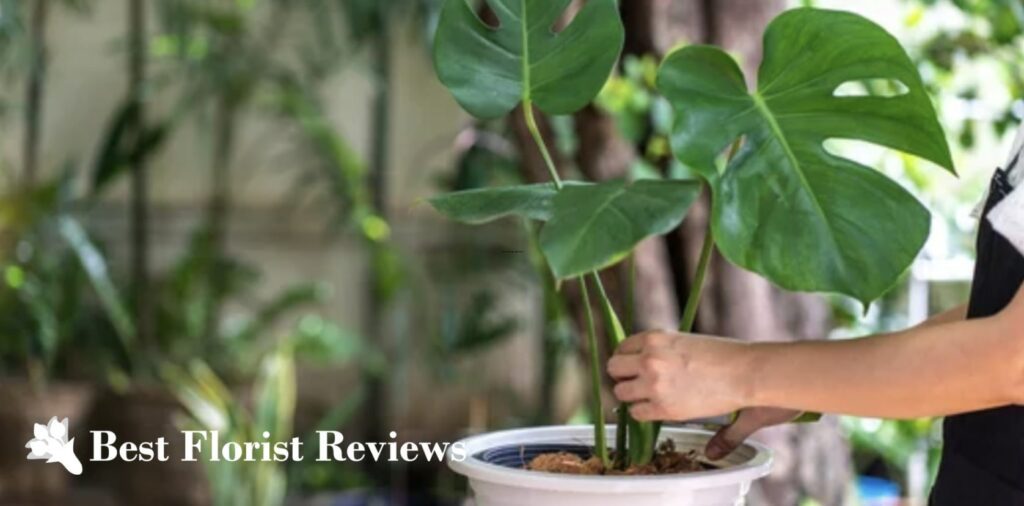

In the wild forests of Central and South America, the Monstera punctulata with its massive leaves is commonly found growing on limestone rocks.
Young Monstera punctulata has a flat, green stem, whereas an adult one has a somewhat cylindrical, brown stem that’s 1.2 to 1.6 in. tall.
It starts out as having a few cuts and holes and will eventually develop symmetrical and wide fenestrations on either side of the leaf.
Apart from that, it’s a vigorous climber that can reach up to a height of 50 ft. outdoors and up to 10 ft. indoors.
It does best in light, aerated, and great-draining soil, preferably one with peat. This allows the soil to drain water at a moderate rate and retain moisture.
It enjoys partial sun exposure which will allow it to produce bountiful green foliage and distinct fenestrations.
Watering must be done every 7 to 10 days, making sure that the topsoil is dry beforehand.
Fertilizing the arum plant once every 6 weeks when it is actively growing will be beneficial for its growth and foliage production.
18) Monstera lechleriana
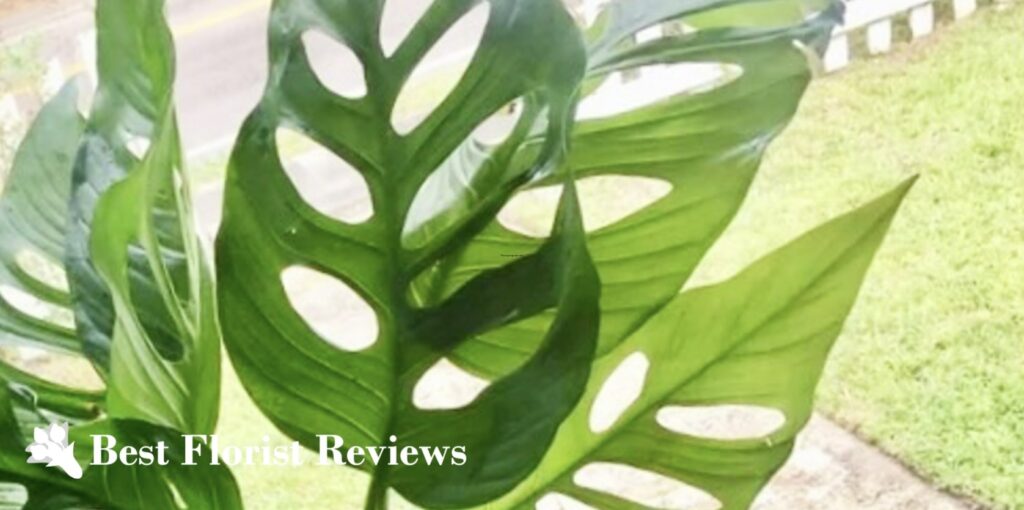

Monstera lechleriana is a rare evergreen climbing vine of the Arum family and genus Monstera.
It naturally exists in the wet biomes of Central and South America including Brazil, Peru, Venezuela, Ecuador, Colombia, Panama, and Bolivia.
It’s particularly known for having large, glossy, and heart-shaped leaves perforated with oval holes of different sizes.
The leaf of this Monstera species is average-sized, measuring about 10 in. long at maturity.
Many people grow it as a vine houseplant with a stake, moss pole, or trellis support, which allows it to climb at a max height of 8 ft.
It must not be placed somewhere under direct and harsh sunlight but under shade or a net for partial, cool, and bright sun exposure.
Also, the Monstera lechleriana needs soil that’s airy and well-draining. It needs frequent watering every 7 to 10 days when the top 3 to 4 in. of soil is dry.
19) Monstera sierrana
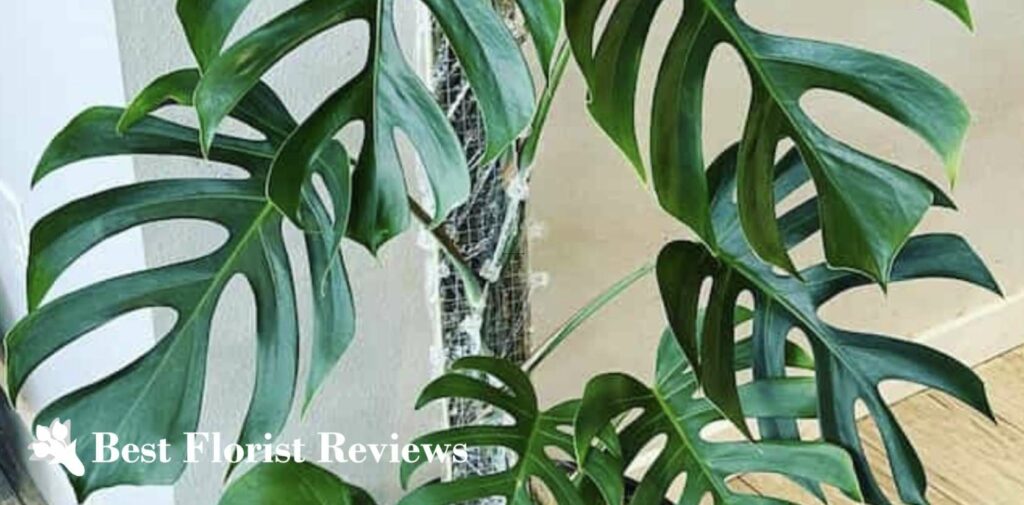

Found in high Brazilian mountain ranges, the Monstera sierrana is an exotic and rare sub-variety of the Monstera deliciosa.
Although they are often mistaken for one another due to some similarities, Monstera sierrana has a thicker texture and deeper splits that cut close to the central vein.
Also, the Brazilian cultivar only grows up to 3 ft. indoors, which is significantly shorter than the other more common Monstera variety.
To grow tall and large, Monstera sierrana needs to be grown with a moss pole in its pot or on a trellis.
Furthermore, it requires filtered, bright sunlight rather than direct sun which can scorch its leaves.
On the other hand, it won’t do well in low-light settings, unlike certain houseplants.
Thus, if the house lacks lighting, a grow light can be purchased and used to supplement the Monstera sierrana’s growth.
Directing the lights at the plant or putting it under them for 5 to 10 hours a day should suffice.
Watering once a week is advised for taking care of the cultivar.
The soil must also be nutrient-rich and well-draining to protect the plant from being overwatered, which can lead to yellow leaves or root rot.



